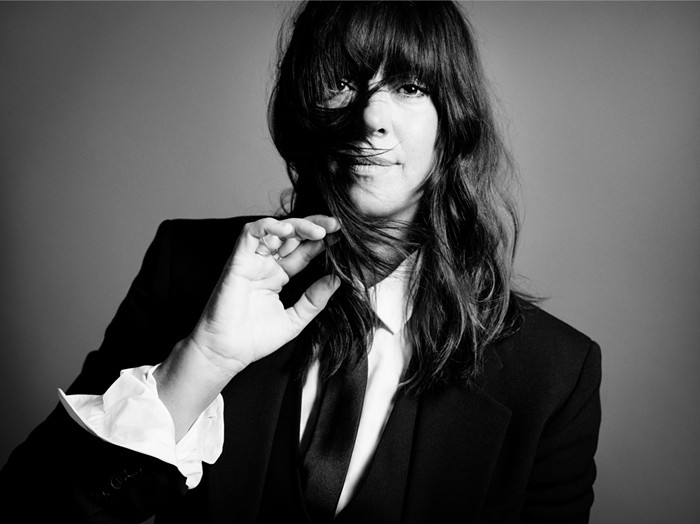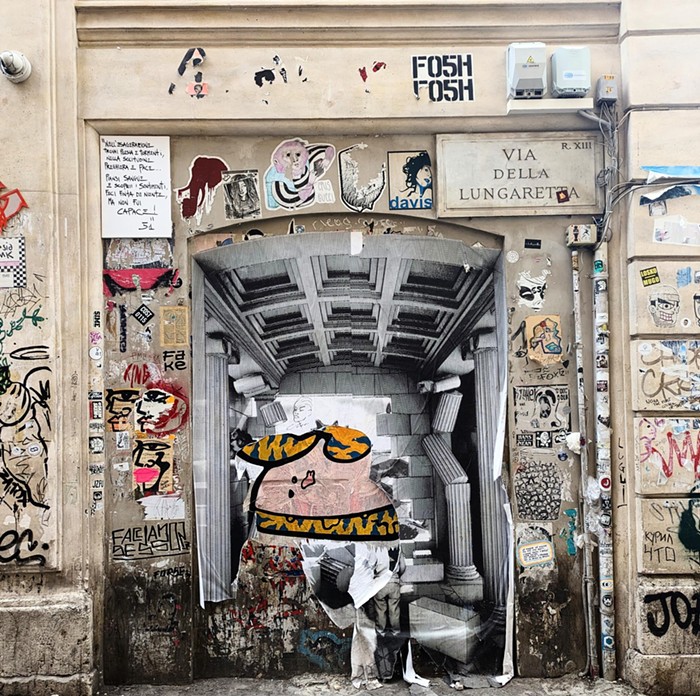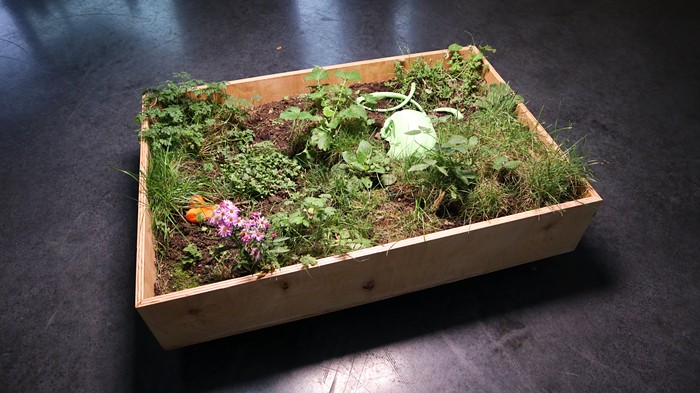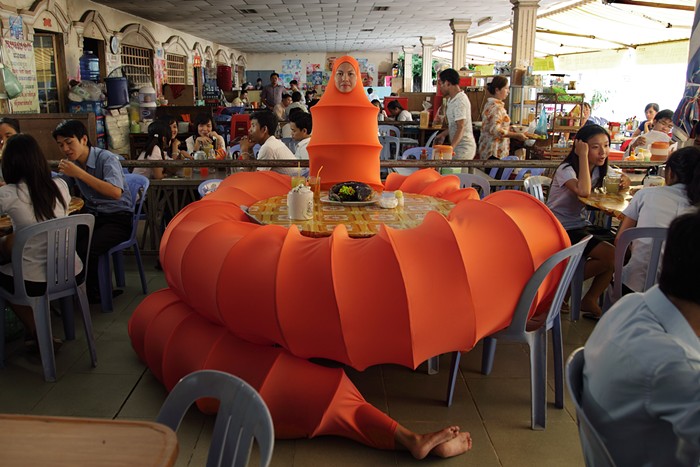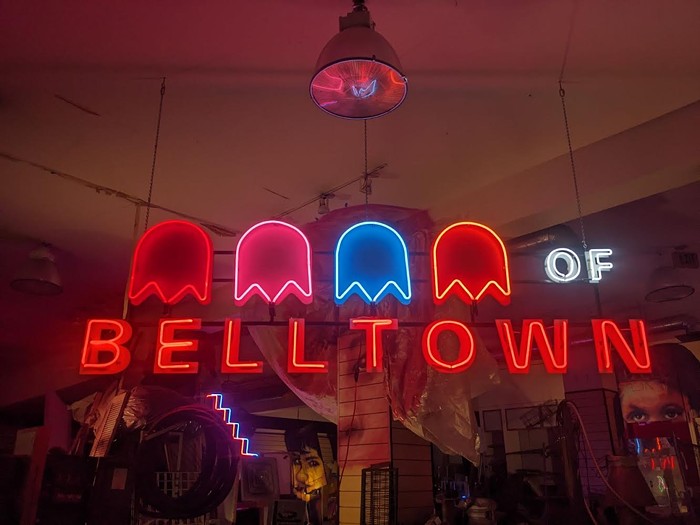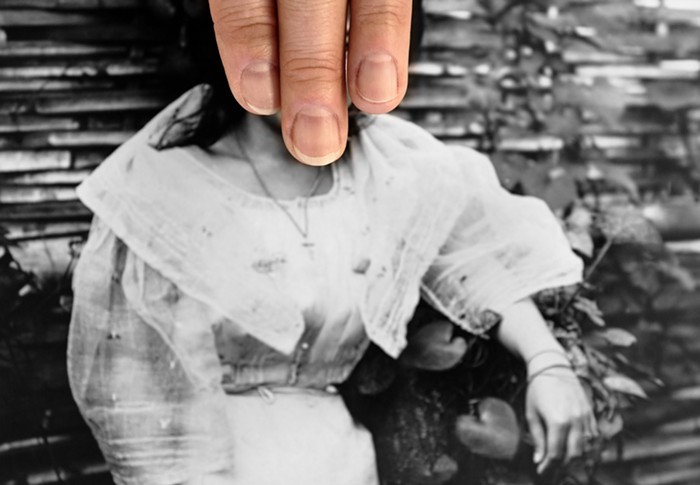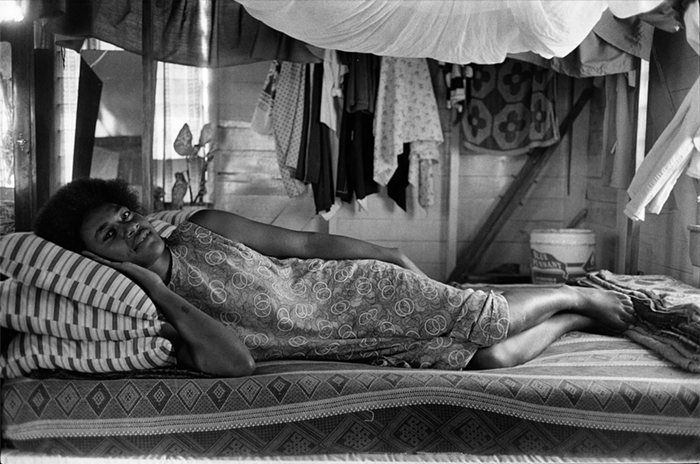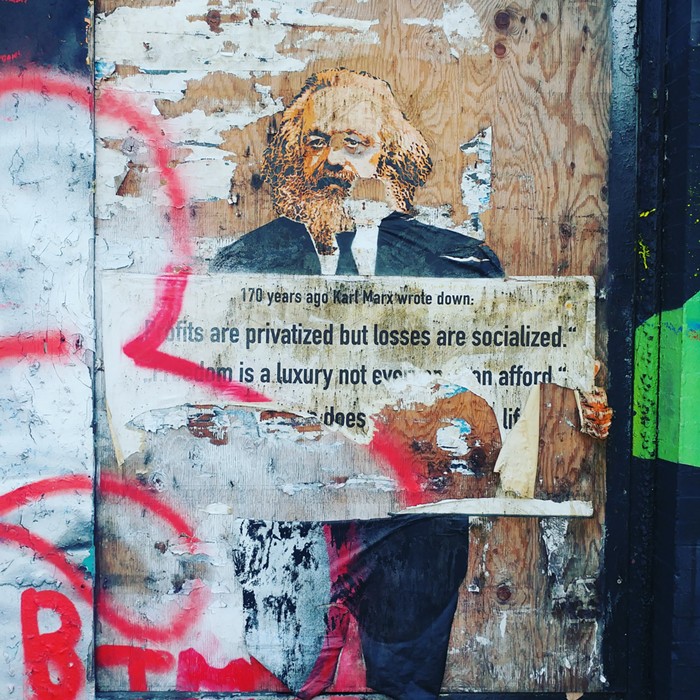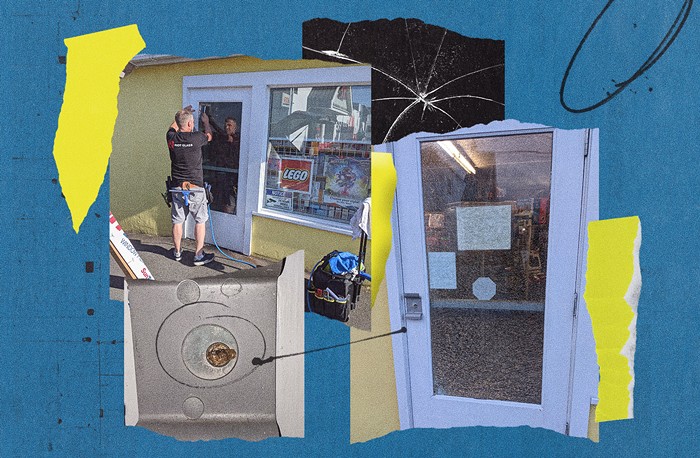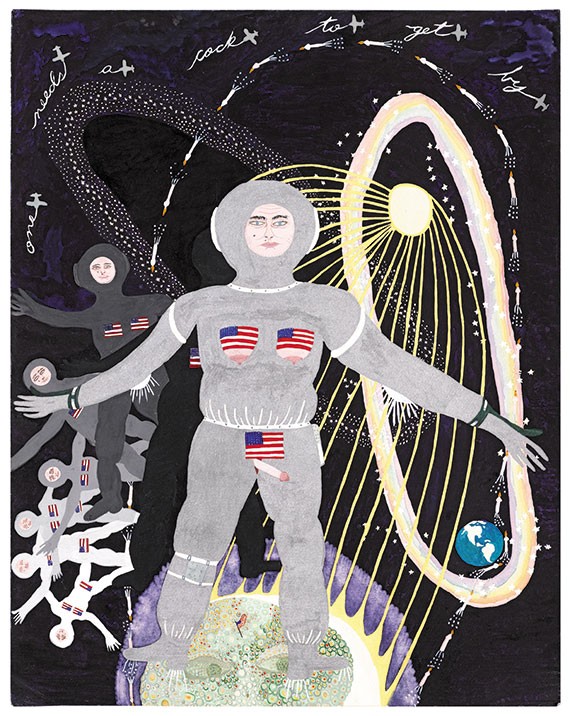
There are thousands of ways to look at things. This is just how I do it. Twice a week, we'll look at art that comes from Seattle, the world, and the past.
Berlin-based artist Olafur Eliasson's 2003 installation, The Weather Project, wasn't an exact facsimile of the sun set.
The source of light hanging high above the concrete floor was a half arc of 200 mono-frequency lamps—the kind that line the streets—reflected in a 4000 square meter thin aluminum mirror so that it appeared to be a circle to viewers on the ground. They could even spot themselves in that "sky." Artificially generated mist would accumulate into cloudlike formations, eventually dissipating throughout the rest of the giant space. Like a mirage.
There's a fidelity to the experience of witnessing the sun set that triggers an animalistic feeling of awe. I feel it whenever I look at pictures of the installation. The Weather Project's version of the sun did not become less spectacular when captured on camera—unlike the real thing.
"I was thinking of the way the sun sets against the sea, or the reflections in Edvard Munch’s paintings," Eliasson told The Guardian in 2018. "Then I put in a little haze, a little fog, which helped take attention away from the hall’s rather robust walls."

I've been thinking about this installation and Eliasson a lot recently. Not only because he explores how museums mediate art—right now, the internet mediates art—but also for his piece's immersiveness. Though unintended, the images of people lying together on the cold concrete, basking in that fake light, make me want to immerse myself in art with strangers. Maybe one day. For today, Eliasson's sun is a reminder of what it means to be among others, having a quiet, private experience in public.

